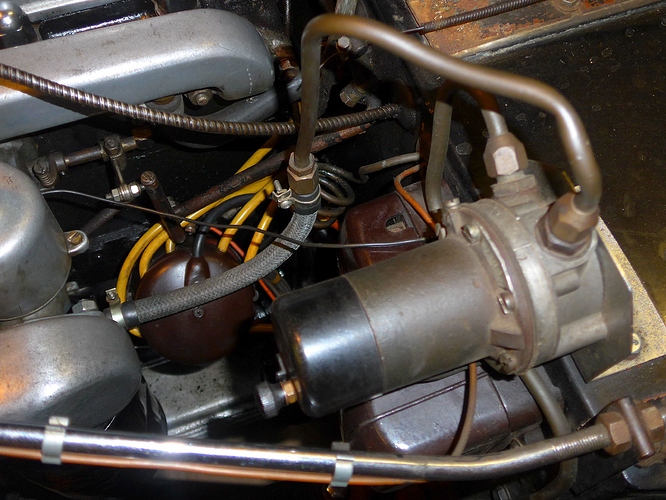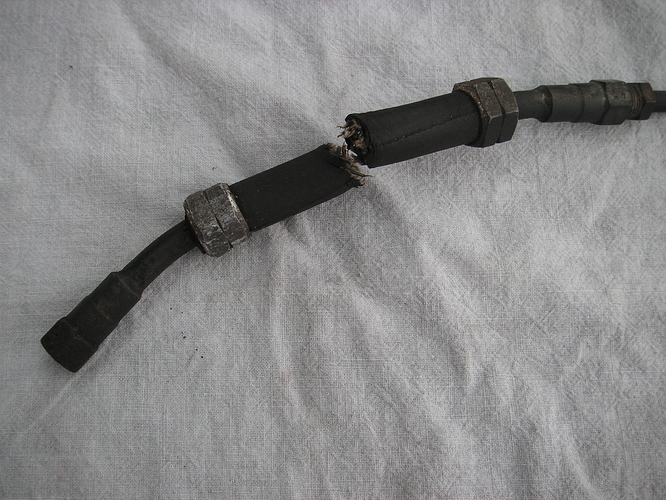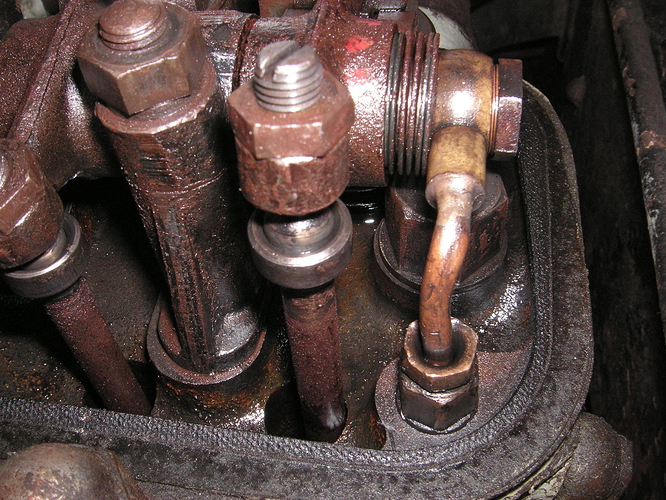I noticed the fuel line on my 1938 SS is 5/16" diameter, where it is 3/8" on my Mark V. The hose between the fuel pump and carbs appears to be non-original and broke apart when I pulled on it. The Mark V hose is the same as XK120 and I have one from XKs Unlimited, but it is of course too big. What have others done for a hose here?
Hello
In a related issue with fuel lines I am rigging up a new 5/16" copper fuel line & wish to know what is the best type of connection to use. What are the pro & cons of:
Flared joint
Soldered on nipple & gland nut
Olive/sleeve & compression nut
Cheers Peter
Alan Gibbins sellsthe correct flexible ho e fitting from pumps to carbies
Yes the diameter was incease for Mk Vs. although weirdly they still kept the same iD on the fittings so nothing really gained. This is the correct hose, but on a 3 1/2
Don’t know about the soldered fitting but generally flare fittings are considered better than compression fittings in most situations. AN 37 degree flares better than SAE 45 degree, male or female. And you might consider copper-nickel tubing (or steel) instead of copper, which can fatigue with vibration. IMHO.
I have to say , I’ve never seen copper fuel pipe fatigue. It certainly work hardens which can make it hard to remove and replace [ unless annealed] But being lazy , I just buy new tubing.
I suppose it depends on conditions, We see in UK people replacing brake lines with copper tubing…Never seen here as no salt on roads.
Once the fittings are tightened , if they don’t leak, they are probably good for ever unless undone. I like the idea of the original rubber fuel hoses. as opposed to the woven stainless steel covering. One can see the condition of the rubber before it causes problems.
Ed, I guess fatigue was the wrong word. The work hardening is the problem–making it brittle and susceptible to cracking with vibration. I think it’s ok if there is no possibility of vibration, as in long runs along the chassis.
I suppose the same issue would apply to copper wiring.
Jaguar actually use aluminium wiring in the le Mans C Types… lighter
Cool fun fact, Ed. Aluminum wiring was used in USA houses (because it’s cheaper, not because it’s lighter) but it proved to be a big problem due to galvanic corrosion, etc. in connectors. Obviously not a problem for Jaguar, whose electrical connector reliability is without parallel. ![]()
BTW Aluminum tubing is used within USA natural gas furnaces because of the possibility that copper could become work hardened with vibration (from the air handler fans).
Thanks, guys.
Work hardening and flexure fatigue are really phases or stages of the same thing, and I’m sure is the exact reason for putting a length of hose in there between the stationary fuel pump and the vibrating engine, as opposed to hard piping all the way.
Conversely, our temperature gauge sender bulbs are hard piped all the way, but there are coils in the tubing to take up the vibration.
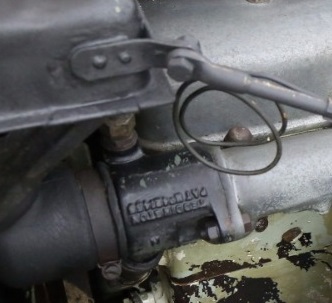
All my fuel line connections are flare joints with nuts and soldered flare ends.
Except at this hose, where there are compression nuts and olive/sleeve ferrules.
Let’s be clear for anyone who may follow to read this; do not use pure copper for pressurized brake lines; copper-nickel aka cunifer is used for high pressure brake lines. I have redone all my Mark V brake lines with this stuff, which is available in 25 ft rolls from various online sources. BTW it requires a special double flaring mandrel tool and a special procedure, not the same as flare fittings used in your house gas lines.

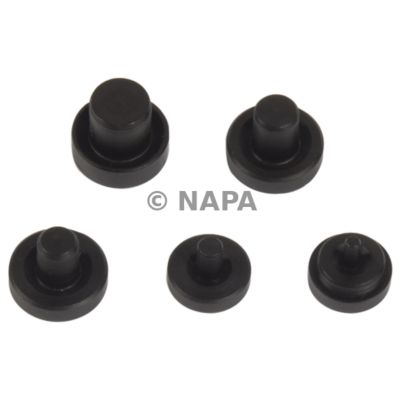
Pure copper is ok for the non-pressurized supply line from the reservoir to the master cylinder.
I imagine the C-Type could save the most weight by putting a little battery right next to the starter motor with a really short cable.
They actually saved about 25 kg[ or was that lbs] but lighter[ no pun intended] headlamps and generator.
And a generator cutout switch for the long straights. I tried that on the 100 but could tell any difference. Exept when my brother accidentally turned it off on a long run and flattened the battery.
The only copper pipe I have found to fracture on SS s , is the one to the rocker shaft end under the rocker cover. Which can’t be seen but would deprive therocker gear of oil. The factory must have realised as bylate SS/ Mk IV they did away with it and ran the oil internally. I have since replaced the pipe but added a coil rather like that on the temp gauge capillary so the flexing is spread over a longer length.
Pressurised brake lines? Hydraulic brakes. Mark my word s, that’ll never catch on.
I don’t know, Ed, you’re always coming up with something new for me to worry about. 

Looking at it, I suspect the circumstance contributing to fatigue fracture might be something like gummed up crud on that compressed spring in there between the moving rocker and the stationary washer under the banjo fitting, allowing a transmission of rotary torque vibration through to the banjo?
I wonder if anybody ever did mechanical brakes with independent suspension?
“Looka here, young Mr. Malcolm Loughead,” said Henry Ford in 1918, “you can’t stop an automobile with squirts of oil.”
“Well, sir, I’ll go see Freddy Duesenberg and Wally Chrysler; maybe they’ll license my invention.”
Send me your address: I still have those “lightweight” alloy screws!
.
.
.
.
…BAAAAAAhahahaha!!! ![]()
At least the PIII Roll-Royces did, with independent front suspension.
Paul thanks
It’s,
E Nantes
51 Frater St
Kew East
Vic3102
Australia
Regards
Ed
